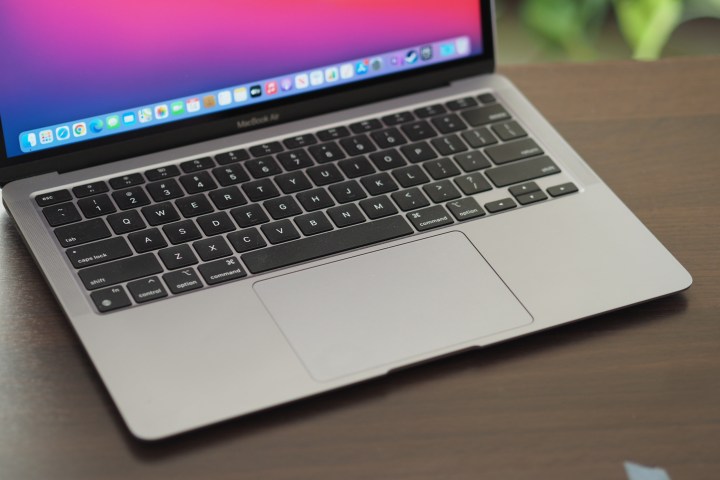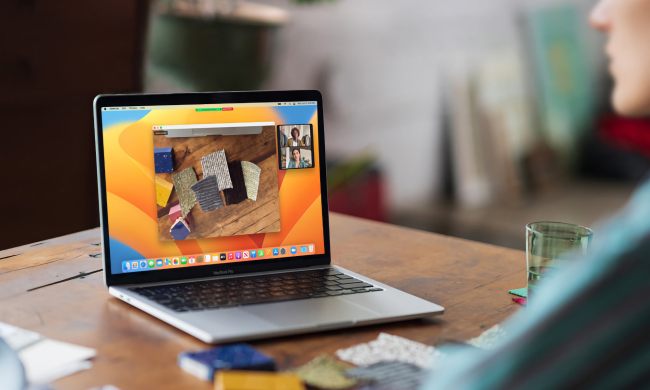These days, the MacBook Air can lay claim to being the best value-for-money laptop Apple has ever made. That is because it comes with Apple’s superb M1 chip, giving it virtually identical performance to the high-end MacBook Pro for under $1,000. It has come a huge distance in the past few years, when it often felt neglected and underpowered.
If you want to buy a MacBook Air, though, there are a few things you need to know first, particularly regarding the memory and GPU. We will cover these details and much more in this guide, giving you all the required knowledge to buy the perfect MacBook Air for your needs.
CPU and GPU options

There are two main models of MacBook Air to choose from, and both are powered by the Apple M1 chip. Although the chips in each version bear the same name and share most of the same features, there is one slight variance between them: The number of GPU cores.
The entry-level MacBook Air’s chip has a seven-core GPU, while the high-end alternative comes with an eight-core GPU. This will make a difference — an extra core of computing power is always welcome — but it is important to remember that this is still an integrated GPU, so it will not be able to match the power of a dedicated gaming laptop. But then, if you are buying a MacBook Air, then gaming probably isn’t too important to you anyway.
If you don’t intend to run any games or graphics-intensive apps at all, pick the seven-core option. If you want to engage in some light gaming or video rendering, go for the eight-core model.
The second thing to note about the M1 chip is that it is so efficient that the MacBook Air is completely fanless. That means you get a totally silent laptop, something that cannot be said of the MacBook Pro (although it is still extremely quiet).
Is 256GB of storage space enough?

Like the MacBook Pro, the MacBook Air has SSD options with up to 2TB of storage space. The entry-level model starts at 256GB and has 512GB, 1TB, and 2TB options, while the high-end model offers 512GB, 1TB, and 2TB configurations.
How much storage space will you need? Well, that depends on what you do. If you use your laptop simply for web browsing, sending emails, and a little light gaming, 256GB or 512GB will be plenty. If you instead focus on photo editing or video rendering, you will likely need more space — but if these are your key activities, you should be looking at the MacBook Pro instead anyway.
You can probably stick with 8GB of RAM

The MacBook Air comes with two RAM options: 8GB or 16GB. You might be tempted to think 16GB is the safer option, but things are not quite as straightforward as they seem, and 8GB could be more than enough for you.
That is because Apple’s M1 chip uses a unified memory architecture (UMA). Because the CPU and GPU are so close together on the chip, the UMA means they can use the same memory pool. This, in turn, reduces bottlenecks and improves performance.
The result is that you need less memory than you would in a traditional laptop. After running a whole series of tests on the M1 MacBook Air, YouTube channel Max Tech revealed the 8GB MacBook Air had outperformed an Intel MacBook Pro with 16GB of RAM. That means an M1 MacBook Air with 8GB of memory is almost certainly enough for all but the most demanding of tasks.
Battery life and ports

The MacBook Air is super thin and light, making it great for portability, and that is backed up by excellent battery life. Because the M1 chip is so efficient, it has a minimal impact on the device’s battery, meaning you will get many more hours out of it than the previous MacBook Air.
In our review of the M1 MacBook Air, it lasted 15.5 hours in our web browsing test and 18.5 hours in the video playback test. Compare that to the latest Intel MacBook Air from 2020, which only managed 9.5 and 10 hours in those tests, respectively. That is a massive difference.
What do you get in terms of ports and extras? Both models of the MacBook Air come with two Thunderbolt 3 ports that are compatible with USB 4, and both have a Touch ID button for verifying purchases and logging you in. Neither version comes with the Touch Bar, though.
Which MacBook Air should you buy?

If you have modest storage needs, the entry-level MacBook Air is a great option. It offers incredible performance (especially considering its $999 price), is completely silent, and has all the bells and whistles Apple is known for, like the excellent Magic Trackpad and a beautiful screen.
The high-end MacBook Air is mainly worth considering for its extra baseline storage and GPU core, although as we noted, it is still not a gaming machine.
Don’t bother upgrading to 16GB of RAM. Thanks to the UMA, the 8GB MacBook Air performs as well as (if not better than) an Intel MacBook Air with 16GB of memory, and it should be more than enough for most people’s needs. If you have more demanding requirements and want to upgrade to 16GB, you should start looking at the MacBook Pro, as its built-in fan will help it perform even better than the MacBook Air.



